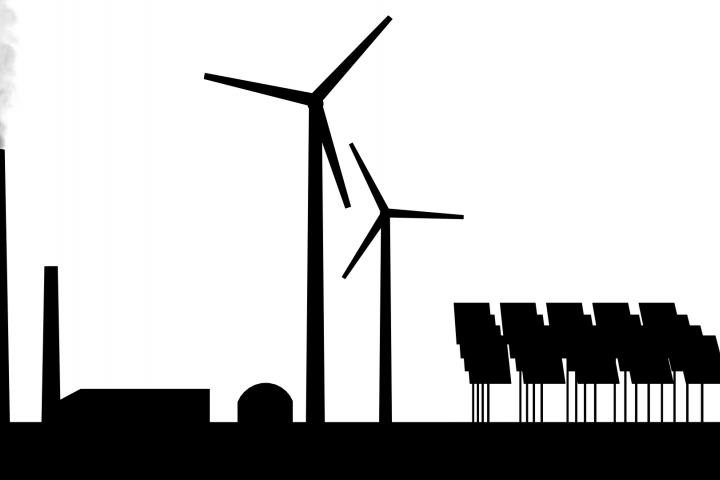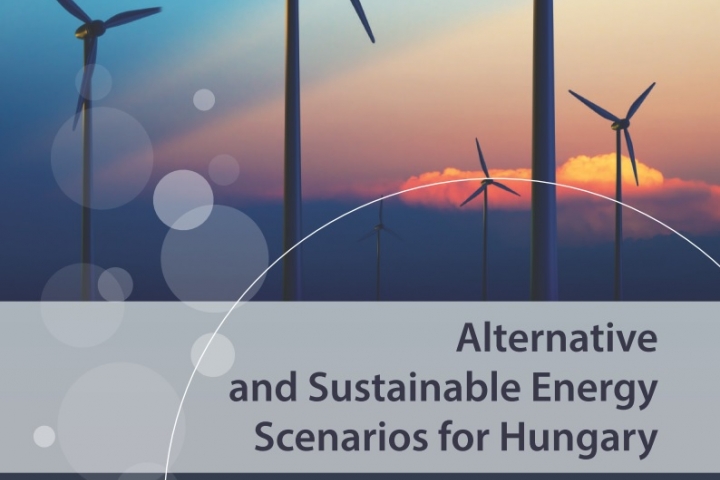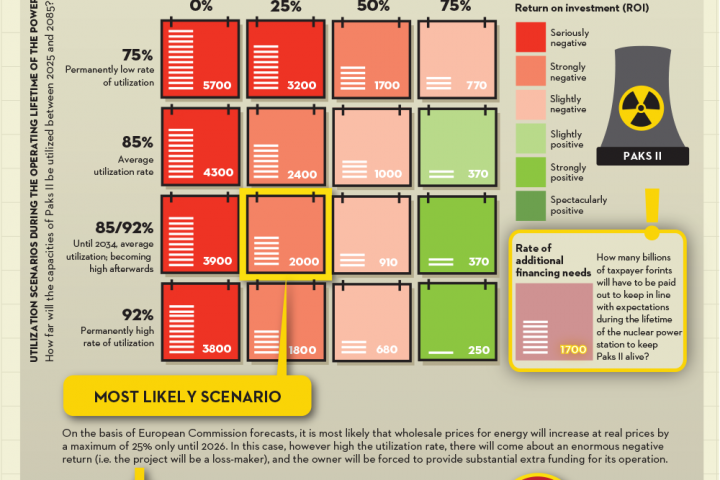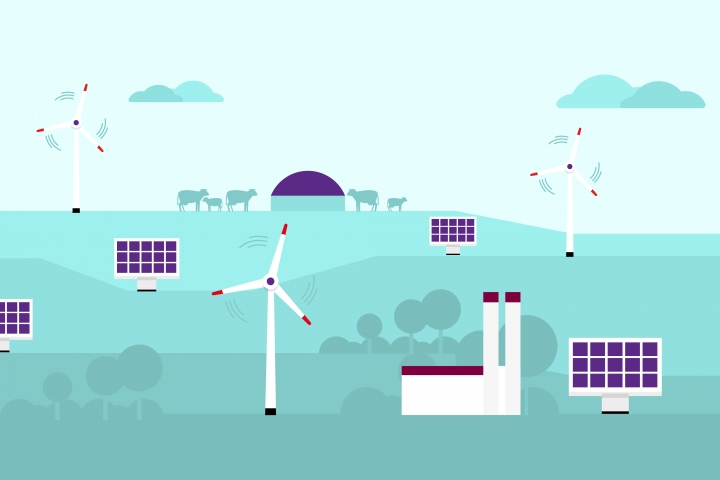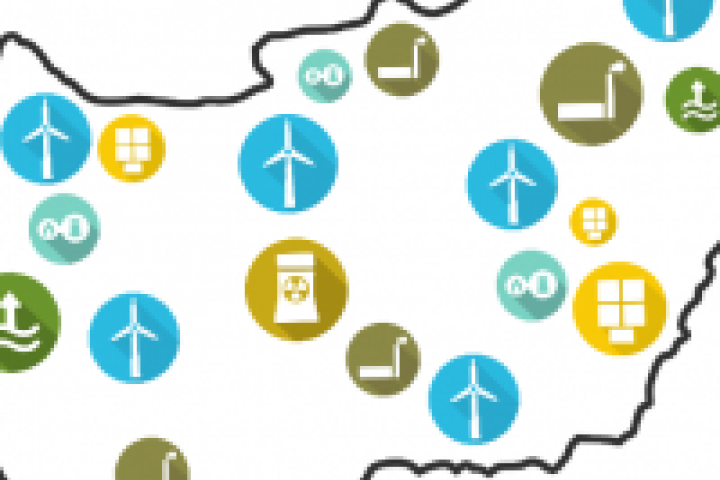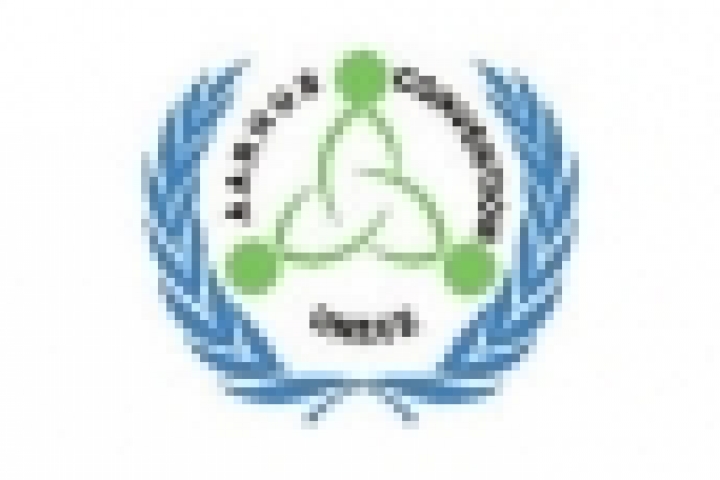Nuclear Trap: Past and Future of Hungary’s Nuclear Policy in the Light of the Russian Influence
Introduction
“The Russians are already in the pantry” [1]goes an adage from a 1965 movie, ‘The Corporal and Others’, which sounds familiar for every Hungarian. For centuries the perception of the Russians was typically unfavorable by the Hungarian public thinking. The Russian state intervened in both Hungarian wars of independence (in 1849 and in 1956) and later occupied the country for decades (during the communist dictatorship from 1957 until 1989). (Győri, Hunyadi, Juhász, Krekó; 2015) But despite of the historically loaded uncertain emotions of the Hungarians toward Russians several policy-makers and politicians are commiserate with the concept of the aforesaid film quote. But not only is the sociological field fragmented apropos of the Hungarian-Russian relations. In the past decade controversial trends can be observed in the field of Hungary’s energy dependence on Russia likewise. (Ámon, Deák; 2015) The nuclear deal on expanding Paks Nuclear Power Plant increases the concerns about the Hungarian-Russian energy relations, and creates one of the immense challenges in the energy policy of Hungary. (Ámon, Deák; 2015)
This paper seeks to present how the relations between Hungary and Russia have been shaped according to nuclear energy in the last few decades, in particular what way the Russians influenced the Hungarian societal, economic and political sphere. The research discusses the following topics: First the historical and societal background of the relations between Hungarians and Russians will be summarized in order to get a deeper understanding on the current processes. Since the only power plant that was and is currently operating ‘Paks Nuclear Power Plant’ was also built in collaboration with the Russians its’ historical background will be outlined too. With that the introduction of the current investment will follow. In order to understand the reasons behind the new, Paks II Nuclear Power Plant it is crucial to discuss how the Hungarian governor party’s attitude has been developed towards Russians. This will be followed by the analysis of the Russian influence on the field of economy, politics and diplomacy. With this conference paper the goal is to give a brief but overall review on the Russian influence on the Hungarian nuclear politics and to be a starting point for further discussions. [2]
[1] http://filmarchiv.hu/en/dvd/catalogue/view/the-corporal-and-the-others
[2] Due to the limits of this conference paper other parts of the Russian influence on the Hungarian nuclear politics and policies (i.e. uranium mining, radioactive waste) are the subjects of subsequent writings. This paper focuses on the Paks I Nuclear Power Plant and the Paks II investment.
The Hungarian-Russian “friendship”
As the introduction presented, the history of the relations between Hungarians and Russians can be characterized controversial. Nevertheless these relations have shifted in the last decade. In the middle of the 2000s both political sides were mostly rejecting any relationship with the Russians. Russian investments were banned from the strategic industries and the idea of returning back to Eastern markets was criticized densely. After signing the contract of Paks II Nuclear Power Plant in 2014 the denial attitude of the political actors had significantly changed and with this, a new policy evolved towards the Russians. (Győri, Hunyadi, Juhász, Krekó; 2015) Ever since the newly formed “friendship” policies, appearances by the governor’s party’s politicians and even economic terms changed in the favor of Russians. (Ámon, Deák; 2015) Apropos of nuclear investments one can believe that maintaining a good relationship with the Russians can be useful for Hungary. The fuel for the soviet-built blocks at Paks Nuclear Power Plant comes from Russia. Rosatom is contracting the current program of life extension of the blocks. Paks II blocks will be constructed by Rosatom with a provided ten billion Euros credit. (Ámon, Deák; 2015) To learn how the Russians got involved in the Hungarian nuclear politics, the following section will present the history of Paks Nuclear Power Plant and the current developments of the Paks II investment.
Paks and Paks II
I
In 1966 Hungary and the Soviet Union signed the agreement on building a nuclear power plant. Hungary signed agreements “on cooperation in the field of the use of nuclear energy for peaceful purposes” with the Soviets. (Szalontai, Radchenko; 2006) The first reactor started operating in 1982, the second in 1984, the third in 1986 and the last, forth one in 1987. (Information Service for MP’s; 2013) All of the reactors are located in Paks and are operating VVER-440 V-213 units. (Oettingen, Stanisz, Malicki; 2015) Approximately half of the electricity production of Hungary is provided from the four reactors. (Hungarian Central Statistical Office; 2017) No events have interrupted the operation of the Nuclear Power Plant until 2003 when a serious malfunction happened that damaged a fuel element. Restoration work was done by TVEL Russian syndicate and the damaged fuel was removed completely in 2006. (Information Service for MP’s; 2013) As compiling the beginnings of the nuclear power industry it can be observed that especially for the sake of Hungary’s political situation soviet technology and Russian nuclear fuel supplies are fundamental to the country’s nuclear sector. (Aalto, Nyyssönen, Kojo, Pal; 2017) The following section about the planned Paks II investment will describe how the relations changed sixty years after the first agreement on building a power plant was signed.
II
In 2014 Hungary and Russia signed the agreement on expanding the Paks Nuclear Power Plant and build Paks II. The contract was signed in January 2014 and by March the Hungarian Parliament has accepted all the necessary bills for starting the construction. (Fazekas, Főző, Tóth; 2014) Details of the contract were not available for the public. Main source of the investment that had applicable information was the intergovernmental agreement between the Hungarian and the Russian states where the parties express their concerns on cooperation in the peaceful use of nuclear energy. It also includes that the State Atomic Energy Corporation, ‘Rosatom’ and the Hungarian Ministry of National Development are in charge of the operation (Fazekas, Főző, Tóth; 2014) Important part of the agreement includes the financial issues which states “that carrying out the investment is subject to this loan agreement: without the loan there is no investment.” (Fazekas, Főző, Tóth; 2014) Main parts of the process of the building of Paks II highlight changes in the relations between Hungary and Russia. The level of secrecy, corruption and impact are tighter compared to the first investment in the 20. Century. The next part of the paper will present what processes led to this agreement. It will discuss the attitude of the Hungarian governor party, ‘Fidesz’, towards Russians and then present what role Russians have in the political, economic and diplomacy fields.
Fidesz and the Russians
After getting acquainted by the progress and the consequences of the nuclear investment of Hungary, this section will analyze the characteristics of the Government’s nuclear policy and its’ relation to Russia. While the Government states in several press materials that constructing a new nuclear power plant will equal cheap energy for the Hungarians, most energy experts claim that this statement is a misleading propaganda. (Weiner; 2017) While this communication fits into the previous years’ governmental statements and accommodates to the strategy of manipulating energy prices Paks II will produce. The fake propaganda does not seem to bother the Governmental party even though that the secrecy of the project annoys even their supporters. The construction ties Hungary to Russia and there is no evidence why signing the agreement was necessary (Weiner; 2017) Fidesz was not always in such positive relationship with the Russians. They got in power for the first time from 1998-2002 when there main task was to prepare the country for the NATO and the European Union accessions. This verve lasted even after 2002 when they were not supporting Russian investments as opposition. (Győri, Hunyadi, Juhász, Krekó; 2015) The changing point came with the ideological changes of the party after 2010. Ever since then the government can characterized as illiberal. They opened both economically and politically towards East, while distancing from the West. And in 2014, signed the agreement on building Paks II with the Russians with which Hungary’s energy dependence grew stronger. (Győri, Hunyadi, Juhász, Krekó; 2015) Just a year after the deal the Russian International Affairs Council identified Hungary as favorable hearing for its position. The country “achieved” another name, ‘friendly pragmatist’. (Orenstein, Kelemen; 2016) The aforementioned evidences show that Russia not only wants to finance a great nuclear investment in Hungary but also to influence the political sphere. Destabilization of the European Union from within is the access for Russians to weaken it. (Győri, Hunyadi, Juhász, Krekó; 2015) The signs of the growing Russian influence can be observed in Hungary. And while the volte-face of the Government could be surprising it is not a unique phenomenal. The Socialist Party went through the same changes of domestic political considerations. Although they are now condemning the governmental decisions and policies from opposition when they were governing, they had better relations with the Russians. (Győri, Hunyadi, Juhász, Krekó; 2015) After this section it can be stated that every governor party in Hungary tends to get a more positive relationship with the Russians. Viktor Orbán’s approach to them is fitting into the illiberal tendencies that characterize his politics. Creating the fake propaganda for Paks II shows that even the Government is unsure with the future of the nuclear investment but for maintaining the good relations with Putin they are keeping the appearance that it was indeed a good decision. The last section details how Russians intervened in the Hungarian politics.
Russian Hungary?
As the previous sections showed the attempt of Russia to develop their own economic and political power and influence on other countries has raised, especially in the case of Hungary. (Weiner; 2017) But this trend can be observed in other countries as well where Russians first got in with trades and then has power to influence other parts of the states as well. Currently 25% of the civilian nuclear investments are done by the Russian. (Aalto, Nyyssönen, Kojo, Pal; 2017) Rosatom, the state corporation work with more than three hundred and fifty subsidiary companies. With this, Rosatom became the largest provider of the nuclear investment business in the world. (Aalto, Nyyssönen, Kojo, Pal; 2017) This achievement can only be realized if the company’s diplomacy qualifications are as delicate as Rosatom’s. Such trades can materialize if the company is supported by both the state and the actors of the network. As researchers have stated from the western observations: this led to increased Russian influence and can even alter the international balance of power. (Aalto, Nyyssönen, Kojo, Pal; 2017) As the Russian example presents this type of diplomacy work requires many committed actors in the process of achieving and maintaining their influence on other countries. While the energy diplomacy of Russia involves numerous actors, such as the President, the administration, ministries, agencies, it can be stated that the most engaged actor is Rosatom. (Aalto, Nyyssönen, Kojo, Pal; 2017) They distribute the energy business and profit interest with the actors as well as they promote the wider interest of Russia in other countries from the socio-economic view. Returning to the case of Hungary, Rosatom acted according to the aforementioned description. The Russian company took advantage of the shifted Hungarian attitude towards them and used that to increase its’ influence on other areas apart from energy policy as well. While they could have dealt with the nuclear lobby of industries, municipalities or even NGOs, Rosatom was focusing on gaining political influence. Additionally this was helpful for the Hungarian Government and they made the Paks II agreement a great part of their electoral campaign. (Aalto, Nyyssönen, Kojo, Pal; 2017)
What can be the solution for Hungary?
While the rise of the illiberal tendencies and the influence of the Russians are inevitable in the case of the Hungarian nuclear politics, studies show that there are options to get out of the nuclear trap that was created by Fidesz and Russia. The Hungarian NGO, ‘Energiaklub’ has created three energy models with EnergyPlane software for the year 2030 in order to draw possible scenarios for Hungarian energy policy. The three scenarios were: 1. Is an official one based on the Transmission System Operator’s projections. 2. An alternative one based on Energiaklub’s vision. 3. A hybrid one blends these two.
Results showed that even by a conservative development more than 27% of the renewable electricity production is possible in Hungary by 2030 while it is only 10% in the official scenario, where 75% of electricity production is nuclear. The software showed that it is possible to run the energy system without nuclear power plants by 2030. And according to the conservative renewable energy utilization targets 27% renewable electricity production share is reasonable by 2030, which is more than a double of the official scenario (where 2400 MW new nuclear capacity is planned instead of new renewable investments). This implies that Hungary has different viable options for the energy system development but it hasn’t been compared and discussed yet with experts and the public.
It can also be stated that nuclear power capacity will be oversized for six years according to the official scenario which is critical from the energy system’s point of view. Nuclear capacity will be larger in itself in low demand hours than the expected electricity demand. The disproportionate nuclear power production and high baseload capacities arise serious issues regarding energy system regulation and renewable energy development which can be expected as the followings:
Between 2026-2032 due to the large nuclear electricity supply (and renewable energy production) other power plants will probably have to minimize their capacity which will likely cause uneconomic environment for them while their existence will be crucial for the 2032-2037 period when Paks I will be phased out
due to larger nuclear electricity supply other electricity production solutions will be hindered for decades. (Sáfián; 2016)
Summary
The aim of this conference paper was to give a comprehensive and broad perspective on the Hungarian nuclear politics in the light of the Russian influence and open the field for further discussions and researches. While historically Hungarians perception of the Russians was never unfavorable, Russians were determinative actors and forms of the country. While their energy policy aspirations are covering the prevailing governmental interests, their methods of gaining more power in foreign countries are sometimes questionable. The expanding of Paks Nuclear Power Plant increases concerns about the Hungarians, especially the Hungarian Government’s energy relations towards the Russians and created one of the biggest challenges for the Hungarian energy policy. Although researchers are offering scientific options to avoid nuclear energy, the Russian loan and the almost top secret agreement with them prevents Hungary to act against the Russian will. “The Russians are already in the pantry” was quoted in the introductory- after reading the paper, the claim can be confirmed apropos of the Hungarian nuclear policy.
References
Aalto, P., Nyyssönen,H., Kojo, M., Pal, P. (2017) Russian nuclear energy diplomacy in Finland and Hungary In: Eurasian Geography and Economics, 58:4, 386-417
Ámon, A., Deák, A. (2015) Hungary and Russia in economic terms - love, business, both or neither? In: Diverging voices, converging policies. Heinrich Böll Stiftung, Warsaw, pp. 83-99.
Fazekas, M., Főző, Zs., Tóth, J. I. (2014) The Corruption Risks of the Nuclear Power Plants: What Can We Expect in Case of Paks II? Access: https://energiaklub.hu/files/study/corruption_risks_paks2.pdf
Győri, L., Hunyadi, B., Juhász, A., Krekó, P. (2015) Domestic political context since 1989: Hungary, Russia, Ukraine In: Diverging voices, converging policies. Heinrich Böll Stiftung, Warsaw, pp. 52-69.
Hungarian Central Statistical Office (Központi Statisztikai Hivatal) (2018) Hungary, 2017. Acces: http://www.parlament.hu/irom41/00208/00208.pdf
Information Service for MP’s (Képviselői Információs Szolgálat ) (2013) Atomenergia In: infojegyzet 2013/1. Acces: http://www.parlament.hu/documents/10181/59569/Infojegyzet_2013_1_atomenergia.pdf/763e458e-a73c-4f19-b257-e864757f2a95
Oettingen, M., Stanisz, P., Malicki, M. (2015) Eastern-design VVER nuclear reactors in European Union In: Logistyka 4/2015
Orenstein, M. A., Kelemen, R. D. (2016) Trojan Horses in EU Foreign Policy In: Journal of Common Market Studies 2016, pp. 1-16.
Sáfián, F. (2016) Modelling and Analyzing the Effects of a New Nuclear Power Plant. Is there Room for Renewables in Hungary by 2030? In: Geographical Locality Studies 2016 Volume 4, Number 1. pp. 788-819.
Szalontai, B., Radchenko, S. (2006) North Korea’s Efforts to Acquire Nuclear Technology and Nuclear Weapons: Evidence from Russian and Hungarian Archives In: Cold War International History Project, Working Paper #53.
Vlcek, T., Jirusek, M., Henderson, J. (2015) Risk Assessment in Construction Process in Nuclear Sector within the Central and Eastern Europe In: International Journal of Energy Economics and Policy, 2015, 5(2), 482-493.
Weiner, Cs. (2017) Energy Once Again in the Spotlight: New Forms of Russian Investment Presence in Hungary In: Rosszija i Centralnaja Jevropa v novih geopolityicseszkih realnosztyah (Россия и Центральная Европа в новых геополитических реальностях) = Russia and Central Europe in the new geopolitical realities. Institute of Europe Russian Academy of Sciences, Moszkva, pp. 194-214.
